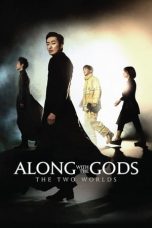- Source: La Guardia Imperial
La Guardia Imperial is an Argentine football barra brava group associated with Racing Club de Avellaneda.
There are two other fan groups known as "La Barra del 95" and "Los Racing Stones". Together, they make up "La N.°1", Racing Club's fanbase.
History
In the 1940s, Argentine journalist Luis María Albamonte, also known as "Américo Barrios", dubbed Racing Club's fans "La Guardia Imperial" (English: The Imperial Guard). He likened them to Napoleon's French Imperial Guard, portraying them as resilient and fiercely passionate supporters.
Racing Club's hooligan group was established in 1958, but it wasn't until 1983 that they took on the name La Guardia Imperial. Before that, they were simply known as "la barra de la bandera" (the Flag Hooligans).
In the late 1990s, La Guardia Imperial, along with the regular fanbase (not just hooligans), rallied to stop the judicial auction of the headquarters in Villa del Parque neighbourhood of Buenos Aires. They also gained attention for their knack of drawing huge crowds to the Cilindro de Avellaneda, even on non-match days, like on March 7, 1999. Another standout moment was when they managed to fill two stadiums simultaneously on the final matchday of the Apertura 2001 season.
Today, various factions are competing for control after the hooligan group split in 2002. For many years, a faction based in Dock Sud held dominance, but now, a group from the shantytown Villa Corina (Avellaneda), known as "Los Pibes de Racing", has taken the lead.
Violence
The hooligan group linked with Racing Club, known as La Guardia Imperial, has its origins in 1958. Initially known for stealing flags and symbols from rival teams, they gained notoriety in 1967 when the theft of a Huracán umbrella led to the death of a Racing Club fan named Héctor Souto.
Over time, tensions grew between La Guardia Imperial and La 12, Boca Juniors' hooligan faction. Things came to a head in August 1983 when a Racing Club supporter named Roberto Basile was fatally injured during a match at La Bombonera. This incident prompted "La Guardia Imperial" to leave the stadium, vowing revenge.
In December 1983, Racing Club was relegated to Argentina's second division. A tense match against C. A. Racing (Córdoba) led to violent clashes between Racing fans and the police. Horacio Baldo, known as "Cacho de Ciudadela", was one of the hooligan leaders involved.
During Racing's time in the second division, their hooligans formed an alliance with Gimnasia y Esgrima La Plata, united by their mutual dislike for Estudiantes La Plata.
Racing's return to the top division in December 1985 was marred by the tragic murder of another supporter, Daniel Souto, by Boca's hooligans. This further escalated tensions between hooligan factions in Argentina.
In 1988, tensions flared during a derby against Boca. A projectile explosion near Boca's goalkeeper, Carlos Navarro Montoya, led La Guardia Imperial to chant defiantly. The match was abruptly halted, with Boca unexpectedly awarded the points.
In 1990, rumors circulated about Racing's hooligans being involved in the death of a Boca Juniors fan, but no evidence was found.
Despite clashes with La 12, La Guardia Imperial's main rival remains Independiente's hooligan group, known as la barra del Rojo (the red team's hooligans). Despite their rivalry, a degree of respect existed between the two factions, rooted in "Old School" principles of hand-to-hand combat. However, tensions escalated following the murder of a Racing fan, Waldo Rodríguez, in 1997.
In 2002, before the Avellaneda derby between Racing and Independiente at the old "La Doble Visera" stadium, tensions flared. Shots were fired by Independiente fans from the stadium towards a quincho where La Guardia Imperial leaders were gathered. This led to a swift and vengeful response, as enraged members took to Cordero Street (now Ricardo Bochini), next to Independiente's stadium, where they fatally attacked Gustavo Rivero, an Independiente supporter.
Violence peaked during both Avellaneda derbies in 2006, prompting authorities to label the matches as high-risk due to widespread hooliganism.
Flags
Despite their turbulent reputation, Racing Club's hooligan faction proudly showcases two of the biggest flags ever seen in a football stadium. The first made its debut during the 1997 Copa Libertadores match against River Plate. The second was unveiled during a 2010 game against All Boys in the Argentine First Division.
In popular culture
There's a tango called A la Guardia Imperial, composed by José Colángelo, as a tribute to the renowned group of Racing Club supporters.
See also
Racing Club de Avellaneda
References
Kata Kunci Pencarian:
- British Overseas Airways Corporation
- Filomena
- US Airways Penerbangan 1549
- Cakupan Google Street View
- Daftar basilika
- Pan American World Airways
- Gereja Sant'Ignazio, Roma
- Daftar pembawa acara televisi
- Daftar tokoh yang meninggal akibat pandemi Covid-19
- La Guardia Imperial
- Racing Club de Avellaneda
- Football hooliganism
- Big Five (Argentine football)
- El Cilindro
- Marine Air Terminal
- Racing Club de Avellaneda (women)
- La barra del Rojo
- Estadio Racing Club
- Royal Guard (Spain)
- 1
- 2
Guardians of the Galaxy Vol. 2 (2017)
Guardians of the Galaxy (2014)
LEGO Marvel Avengers: Code Red (2023)
Along with the Gods: The Two Worlds (2017)
Miraculous: Ladybug & Cat Noir, The Movie (2023)
No More Posts Available.
No more pages to load.














